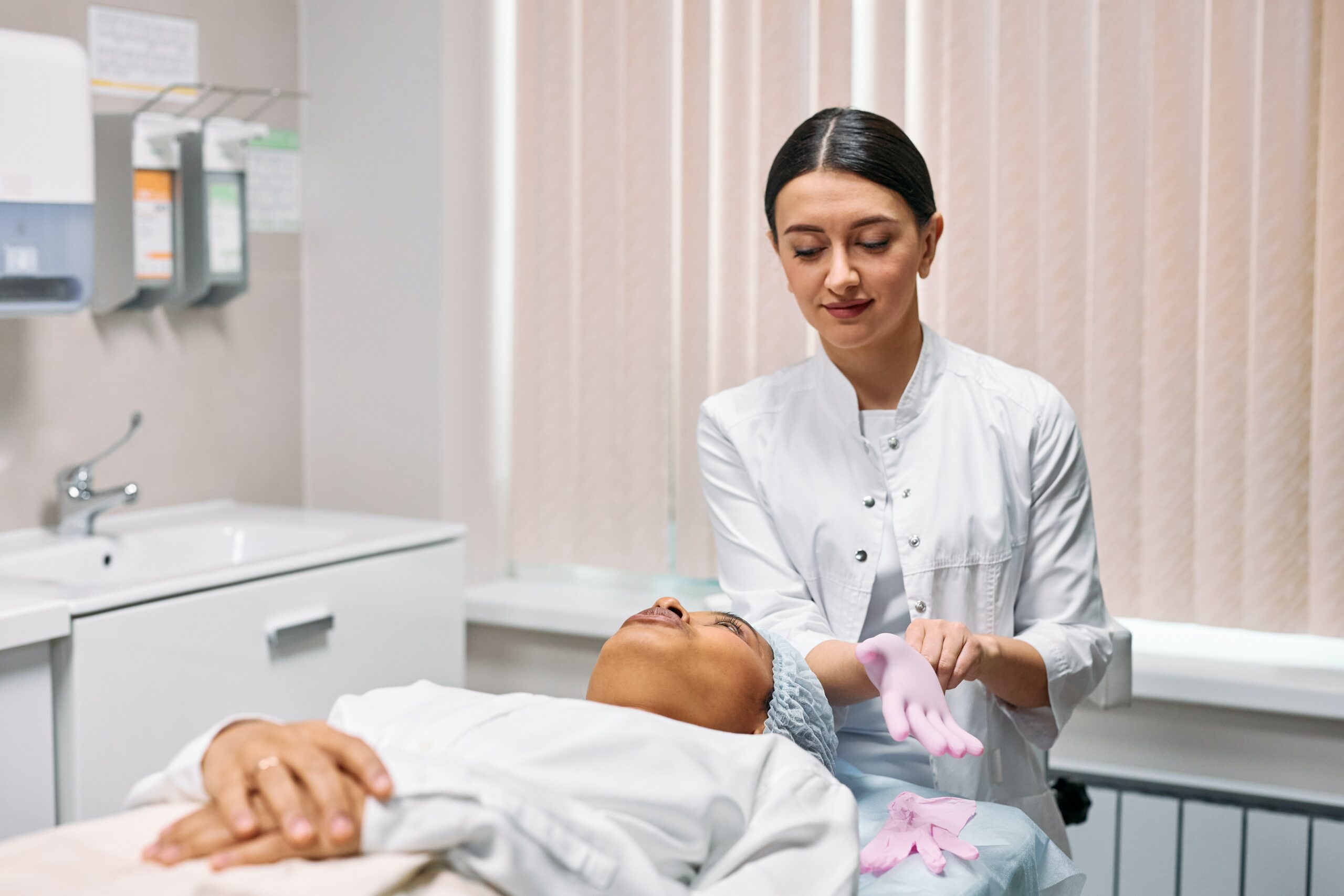In an interview with Targeted Oncology, Erika P. Hamilton, MD, discussed the early clinical activity seen with DS-6000a in patients with advanced ovarian cancer or renal cell carcinoma with disease progression following standard of care treatment.
Interim data from a phase 1 trial of DS-6000a in patients with advanced renal cell carcinoma (RCC) and ovarian cancer (NCT04707248) revealed acceptable tolerability with early signals of efficacy in this patient population of heavily pretreated individuals.
Data were presented at the 2022 American Society of Clinical Oncology Annual Meeting by Erika P. Hamilton, MD, and support further evaluation of DS-6000a in the planned dose-expansion cohorts in advanced RCC and ovarian cancer.
At the data cutoff of November 19, 2022, 22 patients were enrolled in the study including 7 with RCC and 15 with ovarian cancer. All of the patients with RCC received an immune checkpoint inhibitor, and most of the patients with ovarian cancer had platinum-resistant disease.
The median age of the patients was 63.5 years (range, 41-78), patients had a median of 4 (range, 1-12) prior lines of therapy administered, and the median treatment duration was 8 weeks (range, 3-33.14). Additionally, 15 patients (68.2%) were ongoing on the trial by the time of the cutoff date.
Findings revealed that 19 patients had treatment-emergent adverse events (TEAEs) with the most common TEAEs being fatigue (45.5%), nausea (45.5%), and vomiting (27.3%). Grade 3 or greater TEAEs were reported in 4 patients (18.2%) with the most commonly reported being neutropenia (13.6%). Additionally, 1 patient (4.5%) had grade 3 febrile neutropenia, and there was 1 dose-limiting toxicity of grade 4 thrombocytopenia (9.6 mg/kg) that occurred.
There were no discontinuations in the trial due to TEAEs and among the 15 evaluable patients, there were 2 partial responses (1 confirmed in RCC and 1 unconfirmed in ovarian cancer). Nine patients had stable disease and 5 of the 11 patients with ovarian cancer who were evaluable showed CA-125 responses, and all CA-125 responders had platinum-resistant disease.
 In an interview with Targeted OncologyTM, Hamilton, lead investigator and director of the Breast and Gynecologic Cancer Research Program at the Sarah Cannon Research Institute/Tennessee Oncology, discussed the early clinical activity seen with DS-6000a in patients with advanced ovarian cancer or RCC with disease progression following standard of care treatment.
In an interview with Targeted OncologyTM, Hamilton, lead investigator and director of the Breast and Gynecologic Cancer Research Program at the Sarah Cannon Research Institute/Tennessee Oncology, discussed the early clinical activity seen with DS-6000a in patients with advanced ovarian cancer or RCC with disease progression following standard of care treatment.
Targeted Oncology: Can you explain your research on DS-6000a?
Hamilton: We presented the first data from a first inhuman trial of a drug called DS-6000a. It is an antibody-drug conjugate that is targeting something called cadherin 6 or CDH6. It is the same platform as drugs that you might be more familiar with like fam-trastuzumab deruxtecan-nxki [Enhertu] or datopotamab deruxtecan [Dato-DXd]. Essentially, the drug to antibody ratio is 8 and it’s given intravenously every 3 weeks like some of its cousins.
Who was enrolled on the trial?
The patients that were enrolled onto this trial had either renal cell carcinoma or platinum resistant ovarian carcinoma. About a third of the patients on the trial had renal cell and about two thirds that had ovarian cancer. Now for the patients that had renal cell, the median number of priors was 2, whereas the patients that had ovarian cancer had a median number of priors of 4. A lot of patients remain on this drug. Upwards of almost 60% of the patients that we reported data on are still on drugs, still doing well, without their cancer growing.
What were some of the findings from your research?
We saw that nausea, vomiting and fatigue are the most common side effects, but there were no cases of nausea, vomiting, or fatigue that were grade 3 or greater, meaning that although they were common side effects, they tended to be quite mild. Of our patients that were evaluable, there were 20, and we saw 6 partial responses, 4 that were confirmed, and 2 that were unconfirmed as of this safety data cutoff.
We also looked at a tumor marker that we check often in our patients with ovarian carcinoma called CA 125. A lot of times the CA 125 decrease of half or more can be really meaningful for us and for patients kind of regardless of how much shrinkage we get on scans. What we saw was that 8 of our 17 patients evaluable for CA 125 had a decrease of at least 50% while on study. A lot of these actually had stable disease as their best response. Although their tumors hadn’t shrunk substantially yet, they had drops in their CA 125 of at least 50%.
You mentioned there was a small sample of patients in the renal cell carcinoma group. How does that influence the trial?
It enrolled both ovarian cancer as well as renal cell cancer. At this point, we have more patients that have come on to this study with ovarian cancer. That can happen for a variety of reasons like the particular investigators that are in the study or less options for ovarian cancer and more other options for renal cell carcinoma. I’m sure that we will get more experience in the renal cell carcinoma cohort in part B to have more data soon.
What are the next steps for this study?
Where this study stands right now is that we are in part B of the study, we are actively enrolling patients that have both ovarian cancer as well as patients that have renal cell carcinoma at 8.0 mg/kg dose. That is the dose that’s been selected based on this initial disclosure to move.
What do you look forward to seeing regarding the future of this research?
I hope that we continue to see the activity that we have. Right now the number of renal cell cancers that we were able to get on this study was relatively small, only about 9, whereas 21 of the patients had ovarian cancer. I’m really excited to see the activity as we get more patients with renal cell on this study.
I’m also intrigued to see what happens to these patients that had stable disease, but had such a big drop in their CA 125’s. My guess is that those are going to become patients that maybe get prolonged stable disease or a good length of time on study without their cancer growing, which for ovarian cancer that unfortunately has a very short median overall survival, would be really clinically significant for us and exciting for our patients.
What unmet needs remain unfilled in this space?
Particularly for ovarian cancer, there are a lot of unmet needs. We don’t have a lot of effective therapies once patients are platinum resistant, and that means progressed within 6 months of platinum therapy. The therapies that we do have are chemotherapy based, which aren’t targeted particularly just to the cancer cell. They kind of go everywhere and that’s where we get a lot of the side effects such as hair loss and neuropathy or burning seen in the tips of the fingers or toes, or issues with counts.
Antibody drug conjugates are a way to get very potent chemotherapy directly to the cancer cell that’s targeted to that cancer cell by the antibody and leaves a lot of the healthy body cells alone. I’m really hoping that this provides substantial benefit for our patients, and that it also may be better tolerated than some of our standard options.
Reference:
Hamilton EP, Jauhari S, Moore KN, et al. Phase I, two-part, multicenter, first-in-human (FIH) study of DS-6000a in subjects with advanced renal cell carcinoma (RCC) and ovarian tumors (OVC). J Clin Oncol. 2022;40 (suppl 16):3002. doi:10.1200/JCO.2022.40.16_suppl.3002
This article was published by Targeted Onc.


